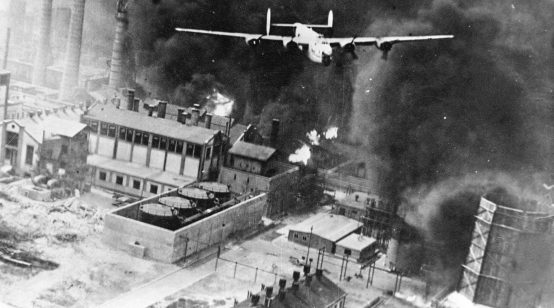
Round numbers attract attention, so when the price for Brent crude oil passed $70/barrel two weeks ago, the world took notice. The price marked a three-year high and produced optimism that the global oil market has rebalanced, and producers will enter a period of growth and higher revenues, much like the 2003-7 and 2009-14 periods. Continued growth in the global demand for oil adds sustenance to this outlook, and the Organization for Petroleum Exporting Countries (OPEC) is predicting steady growth on average of 1.2 million barrels per day (mbpd) to 2022. The International Energy Agency, meanwhile, raised its forecast for oil-demand growth three consecutives months in the second half of 2017 and sees non-OPEC oil production including U.S. shale, Canada, and Brazil to grow by 1.7 million barrels per day in 2018, the largest increase since 2014.
Surging prices, consumption, and production, however, raise the familiar specter of volatility in the oil market, which has plagued the market at various points over the last 45 years. When prices rise and production follows, consumption declines due to oil’s relative cost against other energy sources, and oversupply in the global markets sets in. The downside from 2014-17 was characterized the reverse: prices declined along with production, which in turn increased demand for oil and the recovery that we are currently experiencing. Nevertheless, concerns about oil’s long-term future in the midst of global climate change and the rise of alternative energies and technologies will temper expectations. The aggressiveness with which producers chase these returns, in turn, will determine how volatile oil prices will be in the next five years.
For Europe, a net-importer and consumer of oil, higher prices represent a mixed bag, but are arguably good in the long term. Europe’s oil bill will rise and energy security will feel more precarious in the short term, but higher prices will encourage substitution of oil with alternatives including renewables and, given Europe’s robust political commitment to clean energies, will serve to hasten their greater adoption. Some pain now, in other words, will provide financial incentives for a cleaner, more secure energy future.
OPEC paying the price
OPEC deserves the lion’s share of the credit for triggering the upswing in oil prices since 2016. Having reached a deal to cut production in November 2016, it recently renewed the agreement in November 2017. The agreement has had particularly sharp teeth because of Russia’s participation, a historical first. Major producers are enjoying higher prices and budgetary relief, they remain reticent about oil’s future. Russia had grown particularly conservative in 2017, passing a budget for the next three years that assumed an oil price of $40/barrel. Saudi Arabia just announced that it was seeking to refinance $10 billion of outstanding loans so that it can take on more debt. OPEC and Russia have already made signals that they want to continue their cooperation past 2018.
The role of U.S. shale is critical to their outlooks. The IEA’s World Energy Outlook forecast larger growth in U.S. production than previously expected. Just two years ago, the U.S. Energy Information Administration (EIA) forecast that U.S. production would plateau in the first half of the 2020s; now, the EIA and IEA are suggesting that production will rise into the 2030s. So, in addition to concerns that could trigger volatility through quickly rising and falling prices, the future expectation of larger U.S. supplies will work to restrain the rise in price. There is simply plenty, and probably too much, cheap oil to produce around the globe. Still, major conventional producers and even U.S. shale producers with their shorter investment cycles will not commit capital in as frenzied a pace as they did from 2011-14. Spending on exploration fell 50% from 2014-16, and is expected to rise only gradually to 2019, according to IHS Markit.
Geopolitics and oil prices
The cooperation between Russia and OPEC is noteworthy for having taken place amidst the regional war in the Middle East between Saudi Arabia and Iran and their respective proxies, which has been centered in Syria. In fact, the rising political insecurity brought on by the Arab uprisings starting in 2010-11 helped spur the surge in price from 2011-14, as Saudi Arabia and other Gulf states continued to raise production despite clear indicators that the market would become oversupplied. These countries redirected the 2011-14 budgetary windfalls to greater domestic spending to placate unrest. U.S. shale producers was not the only culprit for the 2011-14 binge.
Geopolitics are always difficult to forecast, but they will surely shape the course of oil prices in the coming years. While some analysts contend that global underinvestment in oil exploration and production from 2015-17 could leave the world short of necessary supplies by 2019, the cooperation of OPEC and Russia and the relatively calming of the war in Syria reveal a rapprochement among the region’s producers to keep prices steady. When Saudi Arabia launched its initial strategy in 2014 of letting the market bottom out so that supply balances could realign, it knew it was undertaking a long-term strategy. The country is unlikely to abandon this strategy now, and it seems that Russia, Iran, Kuwait, and the UAE agree.
It is impossible to guess where the market is headed, and the most reliable indicators come from investors. Hedge funds have not missed out on the current rise and are signaling that they will hold their long positions in oil in the near term. Global stock markets are rising, and oil appears a relatively safe place to chase returns. Meanwhile, producers will continue to enjoy the budgetary fruits of oil nestling into the $70-$80 per barrel range. Yet this will trigger further growth in U.S. shale and other nonconventional plays, making it difficult to see how the price goes much higher, again barring a geopolitical crisis in the Middle East. If such a crisis erupts, all bets are off, and the volatility in global politics would be matched by commensurate volatility in the oil market.





